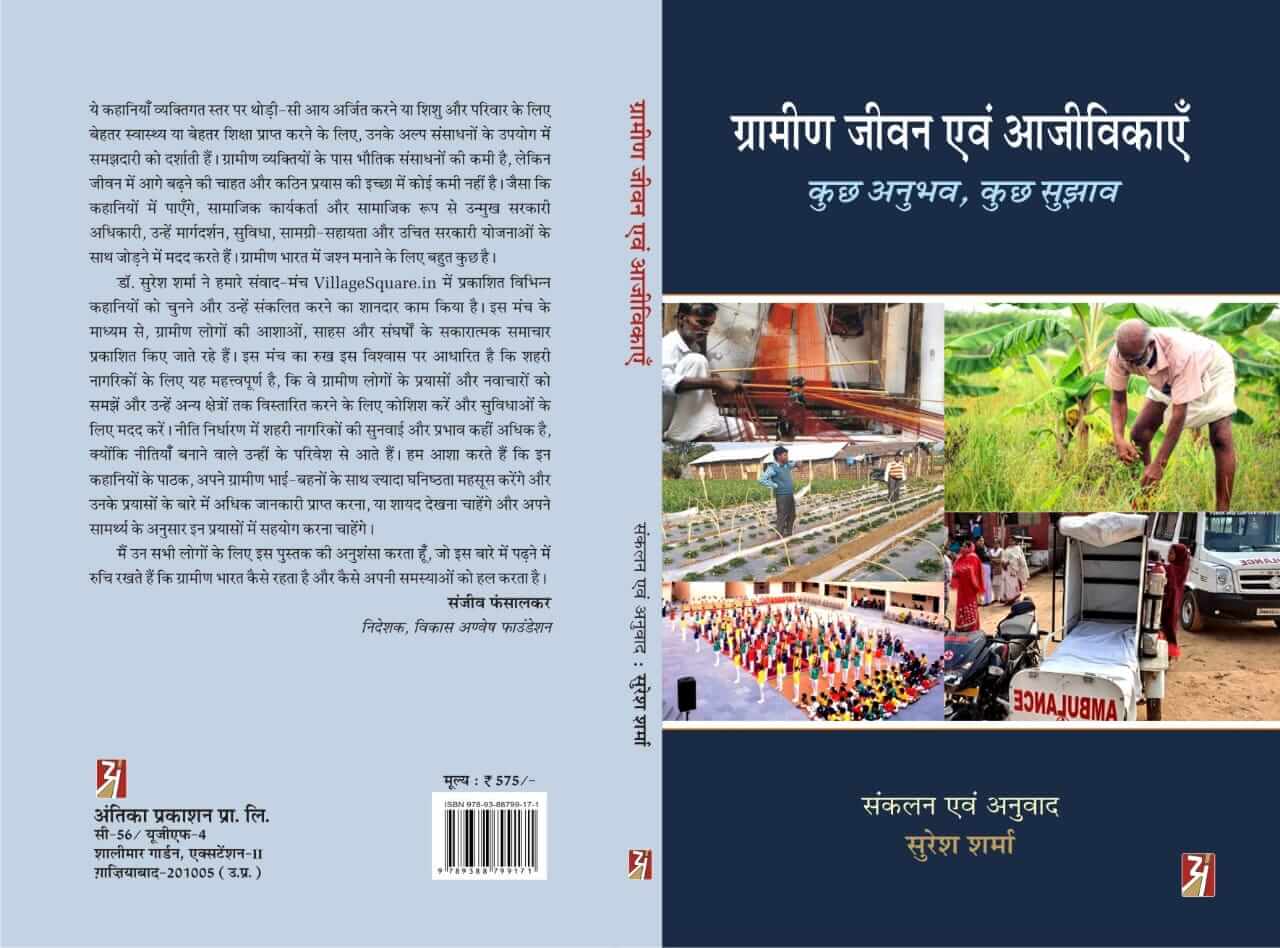An average resident of metropolitan or city dweller has very little idea about how his country men and women live in the rural parts of the country. The awareness and knowledge is even more limited where lives of people living in far off and remote hinterlands is concerned. Much of the portrayal of rural India in mainstream media tends to be negative in its tenor; focusing on hunger, disease, caste oppression and atrocities. There is no question that rural India is in distress. Yet thousands of rural citizens are making arduous efforts at improving their own lives. They are doing this applying their ingenuity, creativity and common sense. They make the best and possibly the most innovative use of their resources around them. Often their efforts are guided and assisted by well meaning social workers. These efforts are very gratifying and keep the hope of rural citizens alive.
Work on the farm is the chief livelihoods activity of the rural people. This is supplemented by non-
farm activities and crafts. Rural people try hard to increase their incomes within their limited resources by adopting diverse techniques of land intensification, such as for instance multi-layer farming, by making very prudent use of the backyards of their homes, by experimenting with new crops such as strawberries or by adopting husbandry of non-tradtional poultry birds. They do not lag behind techniques such as drip irrigation when the technology is scaled down to be within their budget. They try to improve their craft produce and handlooms and reposition them to better and more remunerative markets.
Nor is the rural cousin active only in the field of earning income. They have adopted diverse innovations to educate their children. These may be in the form of a mobile school, provision of transport to girl children, running voluntary but effective informal learning centres for children or providing a bridge between their tribal dialect and mother tongue and the medium of formal instruction in the school. Rural households have been very receptive to the idea of learning about and taking appropriate measures to bring down the incidence of malnutrition, broadening their dietary diversity by intensively developing kitchen gardens and adopting diverse ways of quickly reaching out to those in need of health services. To overcome the constraints of poor road connectivity, rural India has devised an “ambulance” that is powered by a more agile motorbike. In virtually every field of life, rural people innovate and find ways of coping and surmounting the problems that seem so overpowering to us.
These stories reveal the ingenuity of individuals in orchestrating their meagre resources to achieve a modicum of income or better health for the baby and the family or a better education. Rural individuals lack material resources but neither the keen desire to get ahead with life nor the willingness to put in hard efforts. As will be seen in the stories, social workers and socially oriented Government officers provide them with directions, facilitation, material help and linkage with appropriate Government schemes. There is much to celebrate in rural India.
Dr. Suresh Sharma has done a great job of selecting and collating diverse stories published in our communication platform Villagesquare.in. This platform has bene publishing positive news of hope, courage and struggles of the rural people. The stance of the platform is predicated on the belief that it is important for urban citizens to recognize the efforts and innovations of the rural people and try and facilitate their replication in other areas. Urban citizens have much greater voice and perhaps even say in the policy formulation as those who make these policies come form their milieu. We do hope that readers of these stories will feel more closely bonded with their rural brethren and will want to find out more, possibly see some of these efforts and do whatever is in their power to support these efforts.

